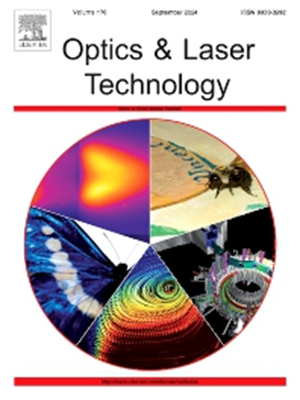Tilt-corrected reflective ptychography based on automatic differentiation
IF 4.6
2区 物理与天体物理
Q1 OPTICS
引用次数: 0
Abstract
As a lensless computational imaging technology, reflective ptychography detects the reflected diffraction field of multiple overlapping areas and reconstruct the complex amplitude effectively. However, in reflective ptychography system, the existing of reflection angle will hamper the reconstruction results due to the reflective diffraction distortion and overlapping inconsistency, especially under large angle condition. In this paper, we interpret the transformation formula between tilted and non-tilted diffraction patterns as the combination of rotation and translation, and propose a tilt correction method based on automatic differentiation, eliminating the need for accurate prior knowledge about tilt angle and the need for interpolation operation. Specifically, this approach enhances the reconstruction quality under large angle reflection effectively. A series of simulations and experiments are conducted compared with traditional interpolation tilt correction method. The results indicate that our method will enable more accurate and effective correction of tilted diffraction patterns, thereby improving overall reflective ptychography reconstruction quality. The potential application of such a strategy can be expanded to other reflective imaging systems with large reflection angle, such as scenes measuring samples by using transparent substrate and simultaneously requiring large angle reflection to ensure high reflectivity.
求助全文
约1分钟内获得全文
求助全文
来源期刊
CiteScore
8.50
自引率
10.00%
发文量
1060
审稿时长
3.4 months
期刊介绍:
Optics & Laser Technology aims to provide a vehicle for the publication of a broad range of high quality research and review papers in those fields of scientific and engineering research appertaining to the development and application of the technology of optics and lasers. Papers describing original work in these areas are submitted to rigorous refereeing prior to acceptance for publication.
The scope of Optics & Laser Technology encompasses, but is not restricted to, the following areas:
•development in all types of lasers
•developments in optoelectronic devices and photonics
•developments in new photonics and optical concepts
•developments in conventional optics, optical instruments and components
•techniques of optical metrology, including interferometry and optical fibre sensors
•LIDAR and other non-contact optical measurement techniques, including optical methods in heat and fluid flow
•applications of lasers to materials processing, optical NDT display (including holography) and optical communication
•research and development in the field of laser safety including studies of hazards resulting from the applications of lasers (laser safety, hazards of laser fume)
•developments in optical computing and optical information processing
•developments in new optical materials
•developments in new optical characterization methods and techniques
•developments in quantum optics
•developments in light assisted micro and nanofabrication methods and techniques
•developments in nanophotonics and biophotonics
•developments in imaging processing and systems

 求助内容:
求助内容: 应助结果提醒方式:
应助结果提醒方式:


